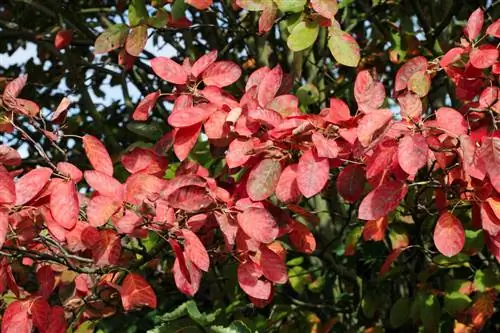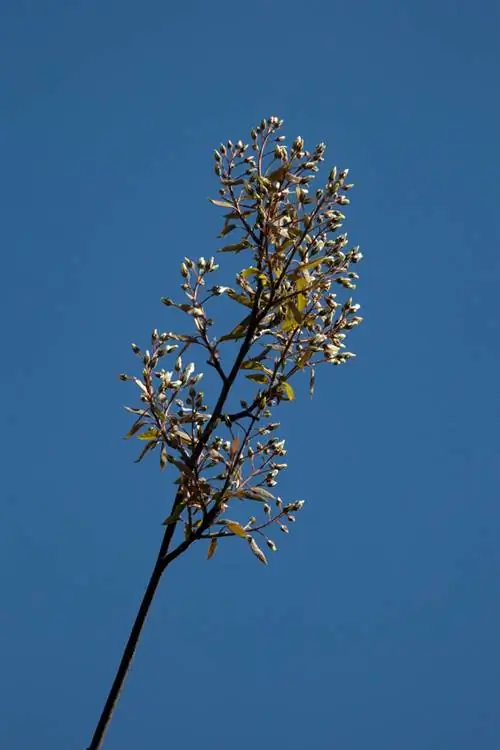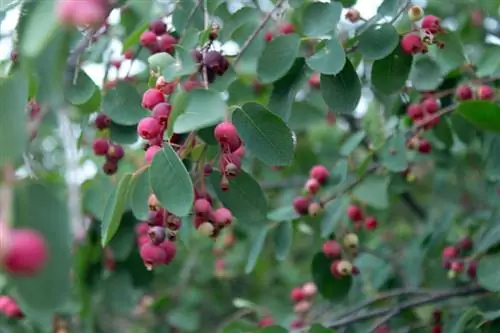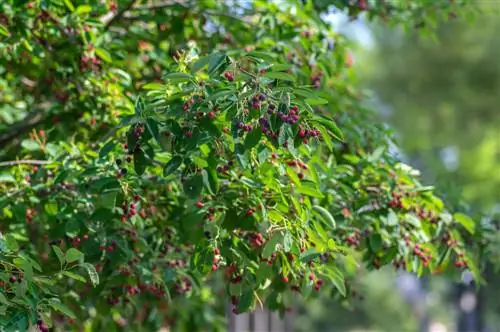- Author admin [email protected].
- Public 2023-12-16 16:46.
- Last modified 2025-01-23 11:20.
Rock pear is popular because of its lush flowers and beautiful foliage color. The seeds and leaves of some species contain glycosides in very small amounts. You would have to eat countless of the tiny fruits to feel negative effects.
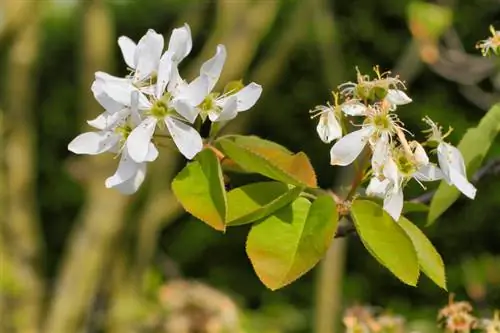
Is the copper rock pear poisonous?
The copper rock pear is not poisonous, but offers sweet-tasting, edible fruits. The common serviceberry contains minimal amounts of glycosides in seeds and leaves, which can only cause negative effects such as nausea or diarrhea if consumed in very high quantities.
Copper rock pear (often referred to as currant tree) produces a blanket of white star-shaped flowers in spring. In late autumn, these develop into small blue-black, sweet-tasting fruits that can be dried or made into jam.
Common serviceberry (lat. Amelanchier ovalis) is less common and has the same external characteristics:
- 1-3 meter high shrub,
- white flowers,
- leaves hairy on the underside,
- blue-black fruits.
The common serviceberry contains very small amounts of glycosides in its seeds and leaves. When larger quantities are consumed - even by animals - nausea, nausea or even diarrhea can occasionally occur.
Tip
The name “rock pear” comes from a certain similarity in growth to the pear tree, but the rock pear belongs to a different genus.


